This gluten-free sorghum bread is made with a single flour type which makes it super simple and easy to achieve! I love how this loaf is light, soft, fluffy, and tender with a neutral flavor. Plus, it is dairy-free, oil-free, egg-free, xanthan gum-free, plant-based and vegan! Sorghum flour bread is great with sandwiches, grilled cheese, avocado toast, or simply spread some homemade plum jam on it.
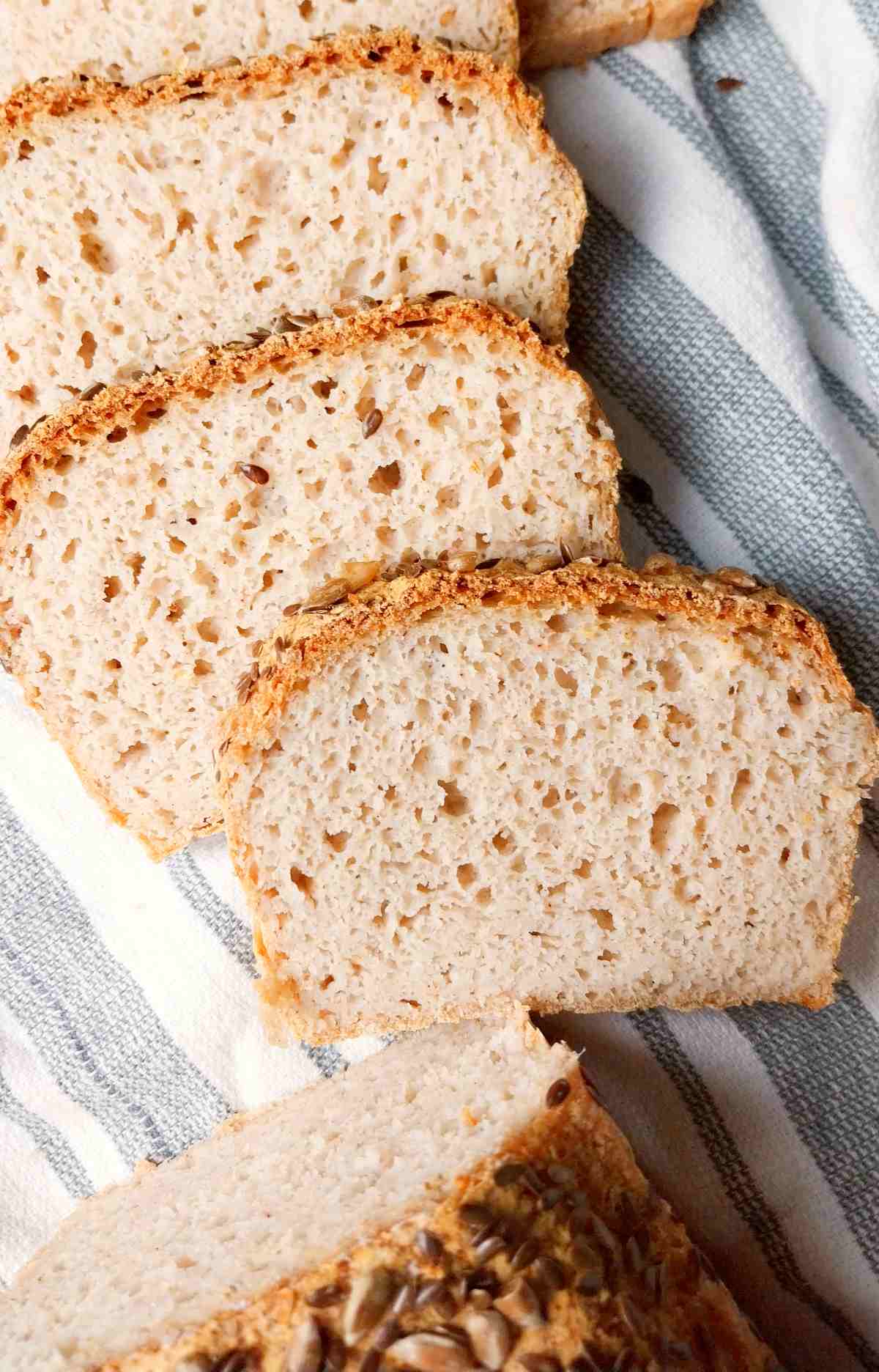
Homemade gluten-free bread doesn't have to be dense, gritty, gummy, or even complicated to make. I love creating recipes for simple gluten-free breads that are soft, and fluffy in texture but not gummy.
Plus, this bread only calls for a single flour type which means it is starch-free, and if you have sorghum flour on hand, you most likely can make this bread without making a last-minute trip to the store!
I wanted to create a whole-grain bread without top allergens so that most of you could make it without making any substitutions.
Jump to:
If you want a quick bread recipe without yeast, check out my almond flour bread and white rice bread.
What is sorghum?
Sorghum is a type of cereal grain that is most commonly used in Asia and Africa. It can be easily cooked like rice and quinoa.
Sorghum is rich in nutrients like vitamin B, magnesium, phosphorus, potassium, iron, and zinc. On top of that, this ancient grain is a great source of protein and fiber!
Sorghum is naturally gluten-free, so it is perfect for those with Celiac disease or gluten intolerance/allergy. To make sorghum, you simply need to mill or grind the whole grains into fine powder with the help of a high-speed blender or a coffee grinder.
I often use sorghum flour in my homemade flour blend that I add to all kinds of gluten-free bakes. Sorghum flouralso does really well in my vegan sourdough bread recipe!
Ingredients
For measurements, see the recipe card at the end of the post or use the "Jump to Recipe" button at the beginning of the post!
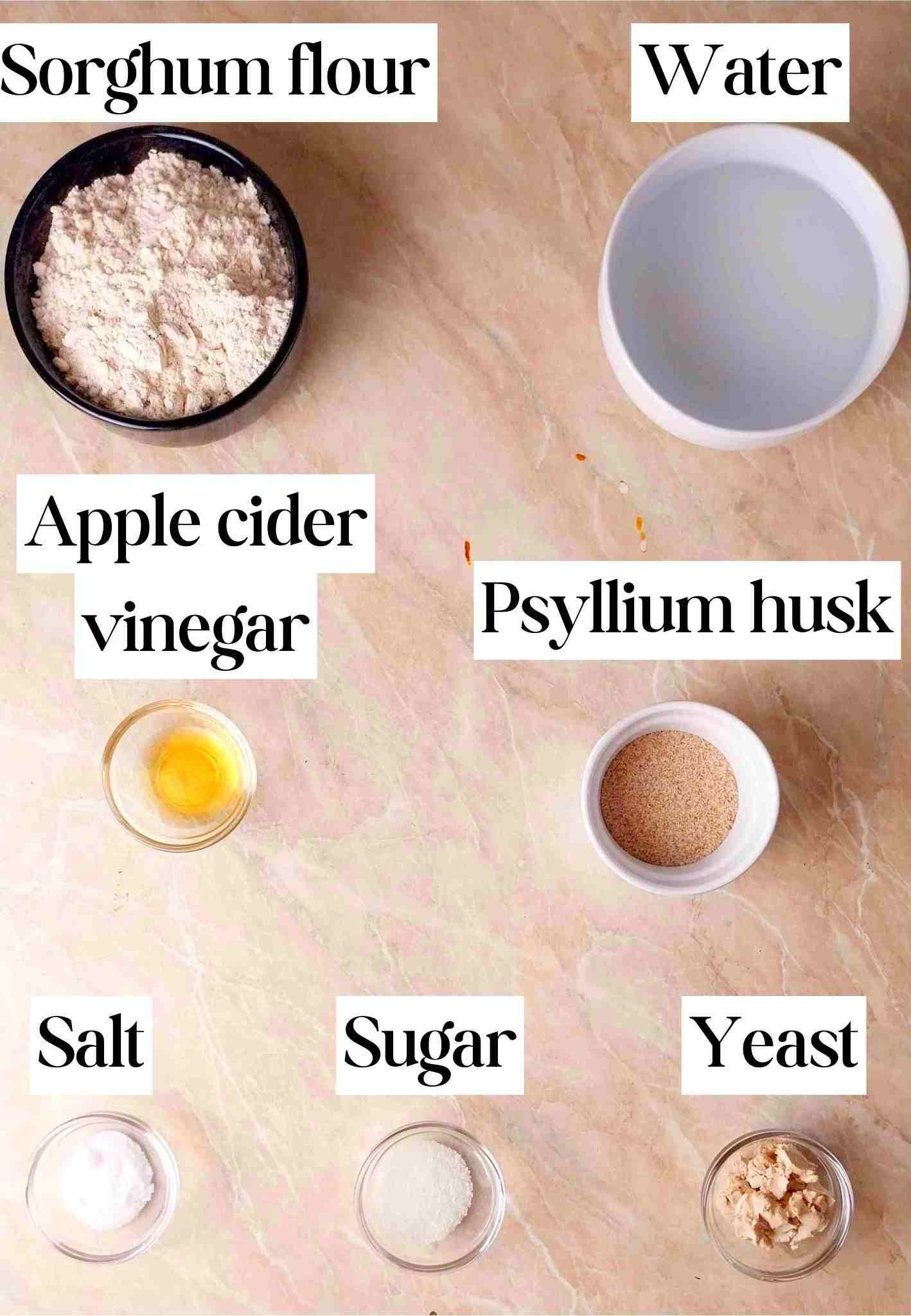
- Sorghum flour - make sure it is not millet flour. Sometimes those two are confused for each other but they aren't the same. Millet flour is yellow while sorghum flour is white-ish grey.
You can use store-bought sorghum flour or make your own flour at home from sorghum grains by using a high-speed blender or a coffee grinder. Food processors won't work for milling the flour evenly and finely!
- Psyllium husk - serves as a binding agent that replaces gluten and creates elasticity in the dough. I highly recommend using whole husks (not psyllium husk powder) for this recipe as they hydrate quicker and are generally easier to work with. For more info, you can read this article on all about psyllium husk in baking.
- Yeast - I recommend using yeast that doesn't require activating (instant yeast or fresh yeast). Active dry yeast will need to be activated before using in bread.
Fresh yeast looks like a cube of pressed yeast that will crumble when you break it apart. It is easily available in European grocery stores in the refrigerated section but it might be harder to find in the US!
- Apple cider vinegar - helps yeast thrive and raise the loaf better. You can use any other edible vinegar instead.
- Sugar - feeds the yeast and aids it in creating more air pockets in the dough.
Substitutes
Psyllium husk - I generally don't recommend using psyllium husk substitutes but if you absolutely can't have psyllium husk, you can try 6g of konjac instead.
Sorghum flour - to make bread with another flour type, check recipes specifically designed for that flour type like these:
For breads with multiple flour types check my artisan loaf and this teff loaf recipe.
Vinegar - use any edible vinegar instead. I don't recommend using lemon juice!
Sugar - you can use honey or maple syrup instead.
Step-by-step instructions
Step 1
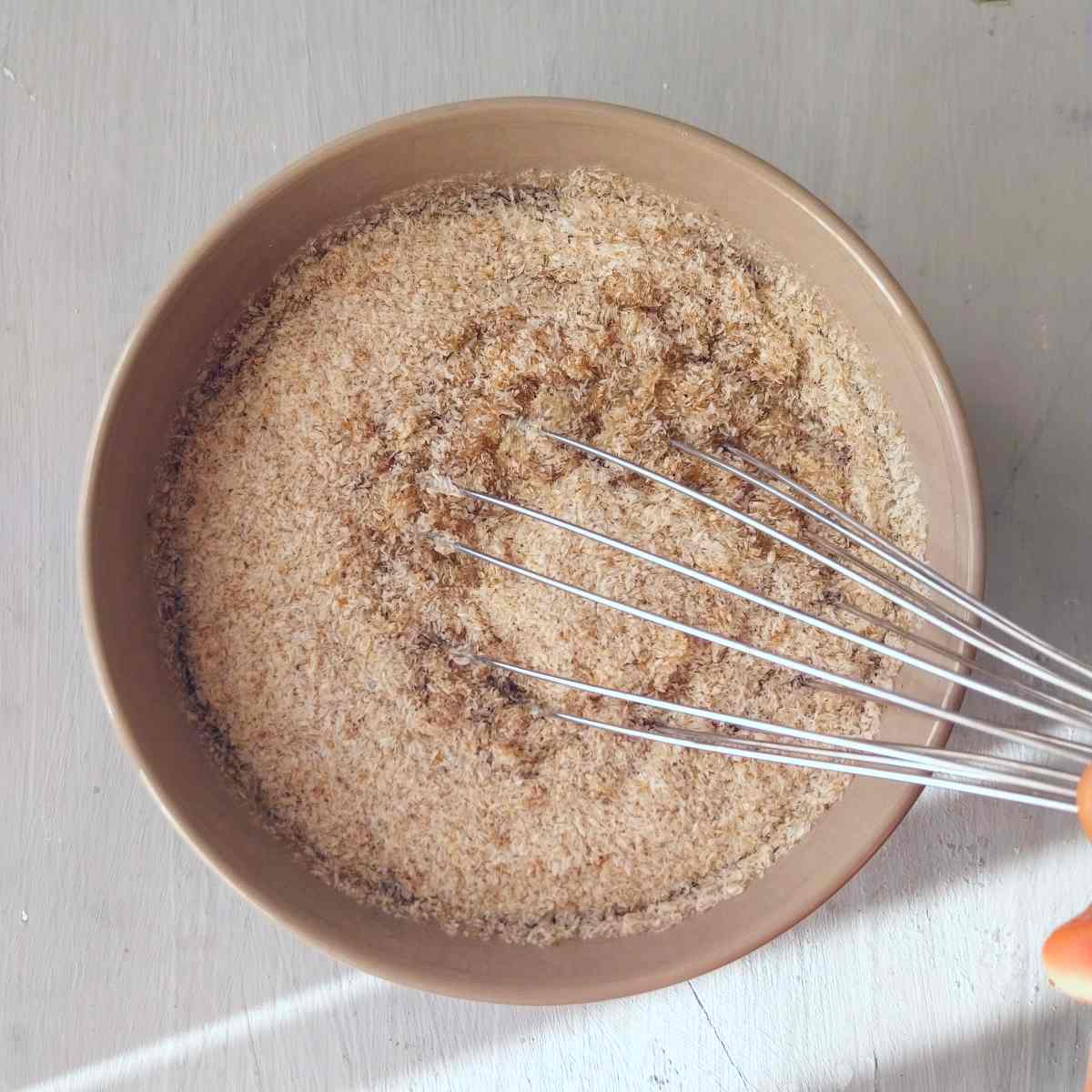
First, we will need to make psyllium gel.
Add the water, psyllium husk, sugar, and apple cider vinegar in a medium-sized bowl and stir to incorporate. Set aside for a few minutes.
If you are using active dry yeast, you will need to save some of the water called for in the recipe to activate the yeast.
To activate active dry yeast: take 150g of the water called for in the recipe and warm it up in the microwave until just warm to the touch, not hot.
Add the active dry yeast and sugar (optional) and let the mixture sit for 10 minutes until it starts looking frothy and bubbly.
Then, proceed with the recipe!
Step 2
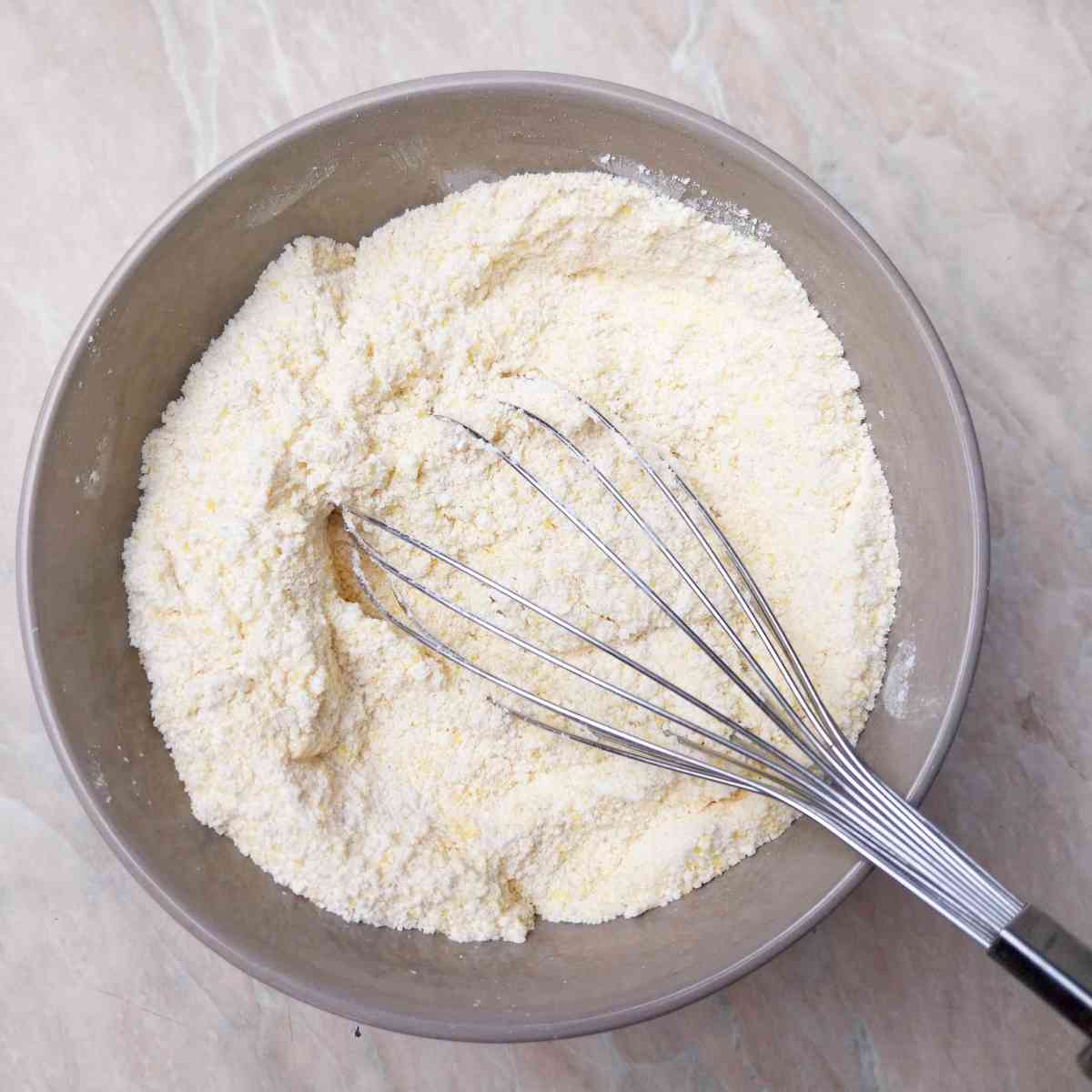
Combine the sorghum flour, salt, and yeast (if using instant or fresh yeast) in a large mixing bowl and whisk to combine.
Step 3
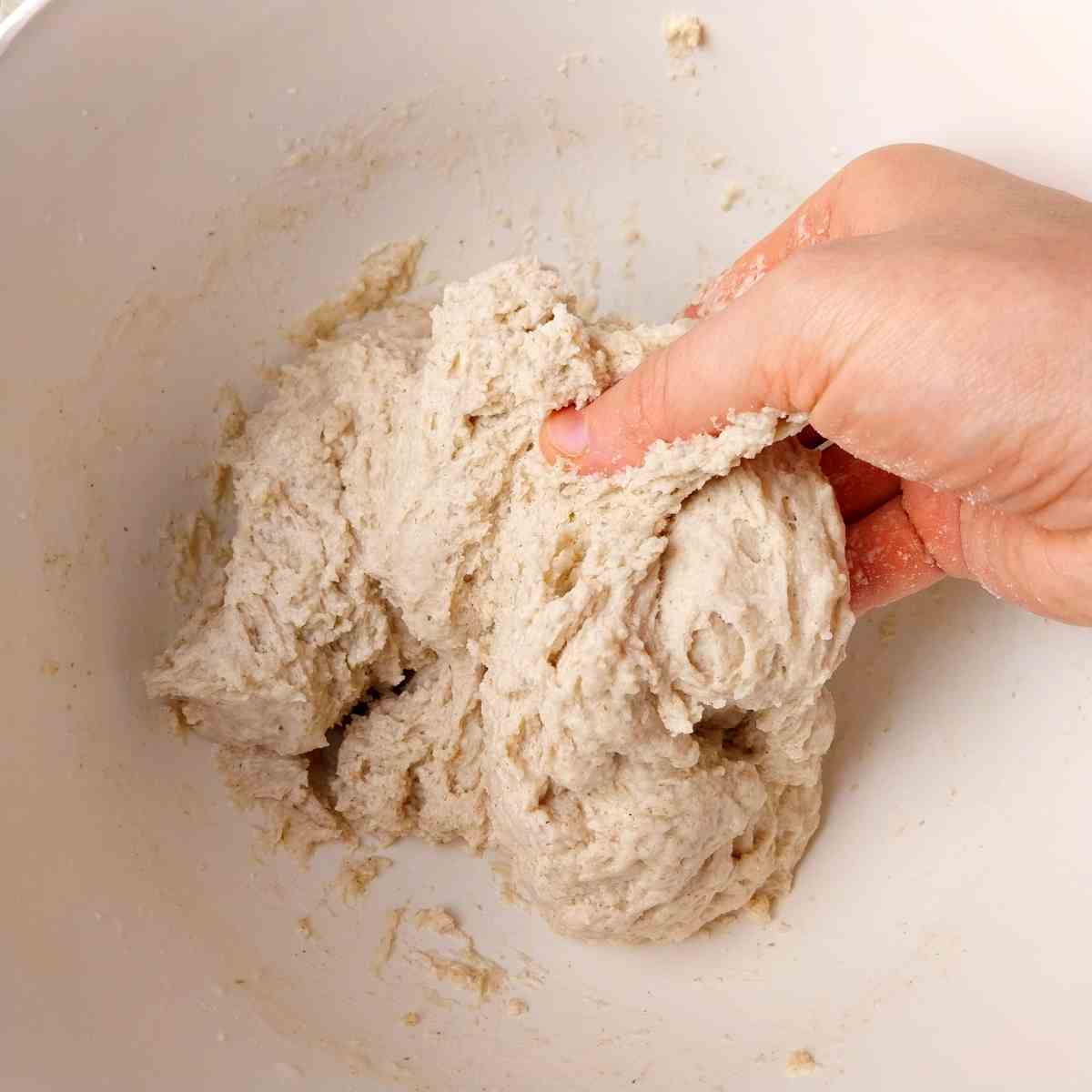
Add the wet and dry ingredients together and mix the dough. I prefer using an electric mixer with dough hooks for this recipe to create an extra smooth dough.
You can, however, use your hands or a wooden spoon to knead the dough. Mix until all ingredients are evenly incorporated.
The dough will be sticky and wet, avoid the temptation to add extra flour!
Step 4
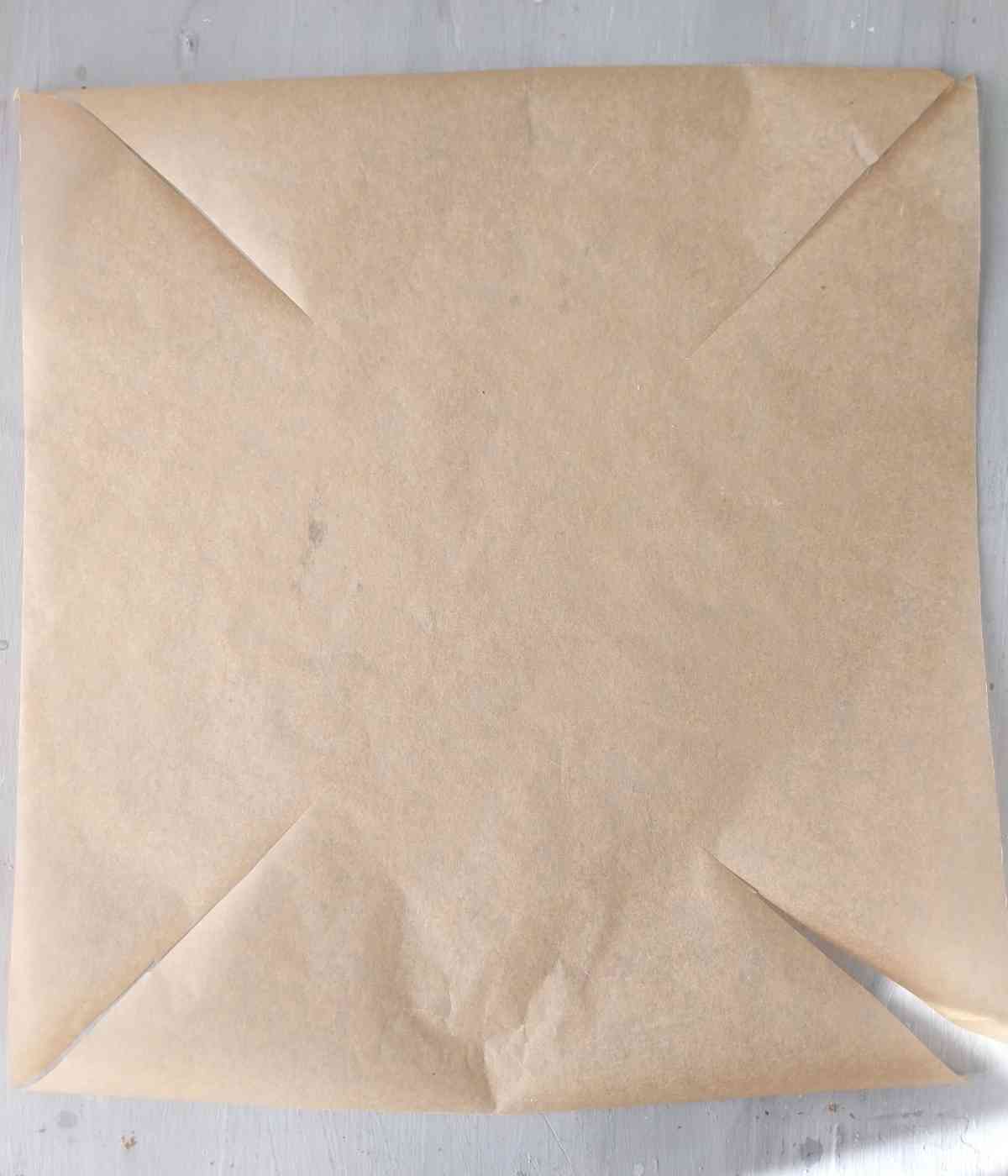
Prepare the baking tin by greasing it and/or lining it with parchment paper. Greasing the pan first makes the paper cling to it better.
I recommend making a few cuts in the baking paper as you see in the picture to make the lining process easier!
Step 5

I like to use a 9x5 inch (22.5x12.5 cm) Pullman loaf pan for this bread.
Line it with parchment paper and fix it in place with clothespins until you place the dough in the loaf.
Step 6
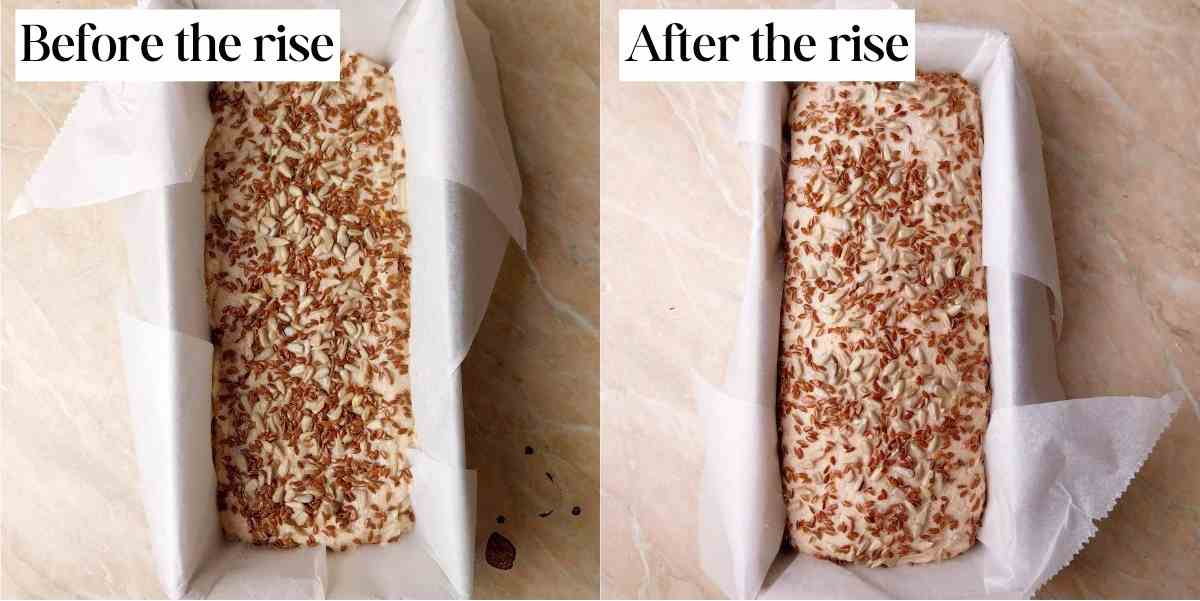
Transfer the dough to a prepared metal loaf pan and smooth the top out with a silicone spatula.
Add the seeds of choice to the top of the loaf. I used sunflower seeds and linseeds, sesame seeds are also a great option. Cover the dough with a kitchen towel.
Place the loaf into a warm and draft-free spot for proofing. I like to let my bread rise in the oven with the light on.
Let the dough rise until it is right under the top rims of the loaf pan, don't let it rise too much or the bread might deflate during baking. For me, it normally takes 40-50 minutes.
When the loaf is ready, I simply turn the oven to 350F/175C, place a dish with water in the bottom of the oven, and keep the bread inside during the preheating time. This method of letting the bread warm up with the oven is called "a cold start."
Alternatively, you can preheat the oven to 350F/175C beforehand and place the bread in a preheated oven. Don't forget to add a dish with water to the bottom of the oven for extra steam!
Bake for 30 minutes, then take the dish with water out and keep baking for another 45 minutes. The bread will not get too dark on the top.
Take the sorghum loaf out of the oven and let it cool in the bread pan for 10 minutes. Then, take the bread out, remove the paper, and place it on a cooling wire rack.
Make sure the bread is cooled completely before cutting into it! Use a serrated bread knife for slicing. Enjoy!
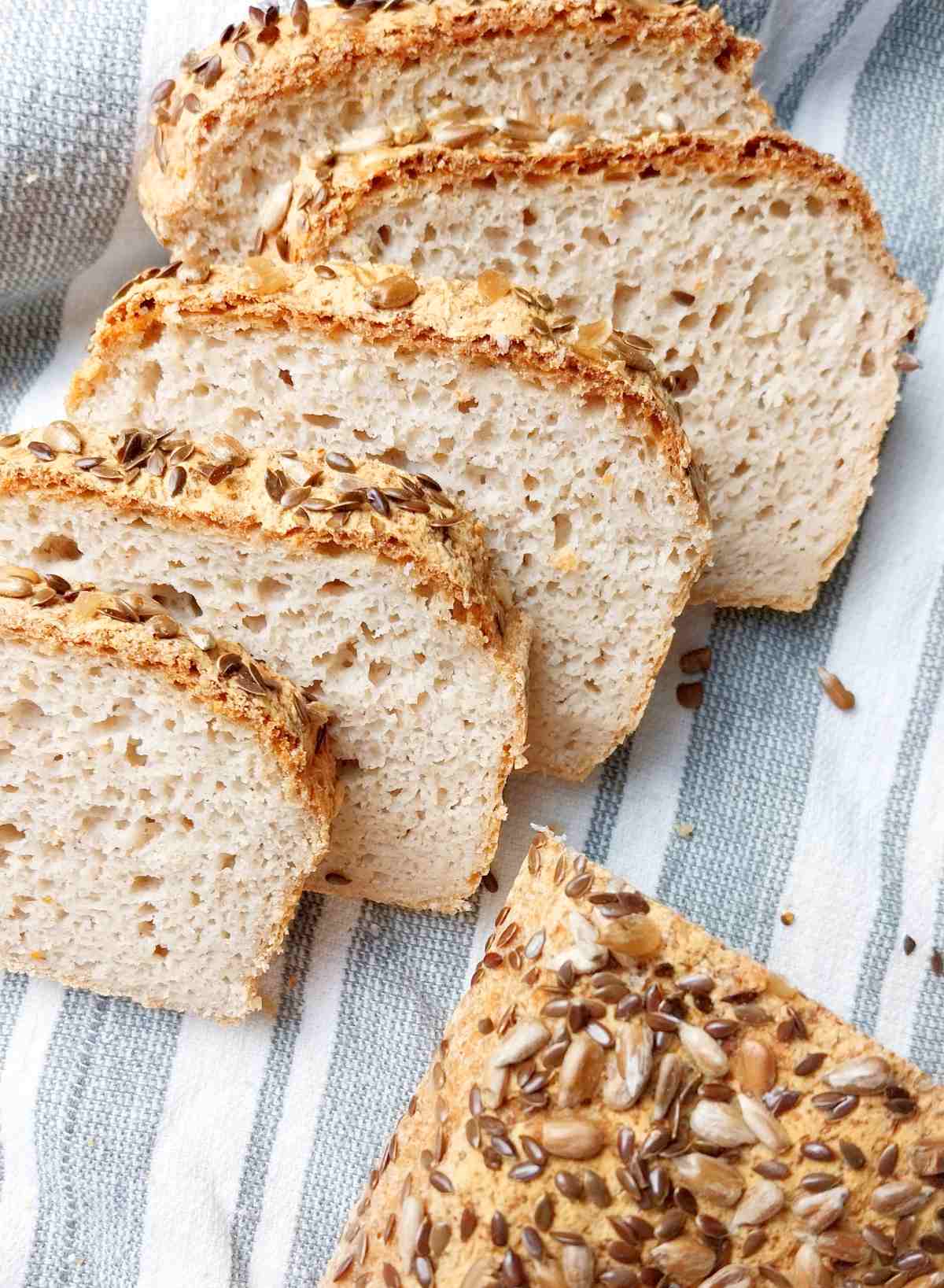
How to know the bread is done
The top will sound hollow if you tap on it and it will be golden brown in color. You can also use a digital thermometer to check the inner temperature of the dough. The bread should be 205-210F/95-100C when done.
Storing and freezing
You can store this bread at room temperature for 3-4 days. Store it in a bread box or bread bag to prevent it from drying out!
You can keep the bread in the fridge for up to 5 days. Make sure it is sealed in a plastic bag or a container.
If you know you won't eat the bread within 3-4 days, I recommend freezing it.
To freeze:
- Slice the bread with a bread knife;
- Arrange the slices on a tray or a piece of parchment and freeze for 30 min.;
- Transfer the slices into a freezer-safe bag or container for up to 3 months.
- Alternatively, you can simply place a piece of parchment in between each slice and freeze the loaf this way.
To defrost, simply place a slice or two in the microwave for 30-60 seconds!
Expert tips
- Don't add extra flour to the dough even if it seems wet.
- Don't open the oven when the bread is in the oven until the first 30 min of baking are up.
- Avoid slicing the bread before it cools completely to avoid extra gumminess.
- Never bake bread in a glass dish as glass doesn't transfer heat that well.
- Don't use the convection setting on your oven.
- Use a digital kitchen scale to measure the ingredients by weight because measuring by volume using cups might not always give you the same results.
Troubleshooting and FAQ
You might have let your bread rise for too long. Next time, bake the bread sooner! Make sure not to open the oven during the first 30 minutes of baking and preheating if you are doing a cold start.
The reason could be either under/overproofing or slicing too soon. Otherwise, if the crumb is a little wet, simply toast the bread and the crumb should dry out. Keep in mind that the bread will be dryer the following day.
Make sure the yeast is not expired. If you are using active dry yeast, make sure to activate it before adding it to the dough. If you leave the dough in a cold place, it might take longer to rise!
You might also like these recipes!
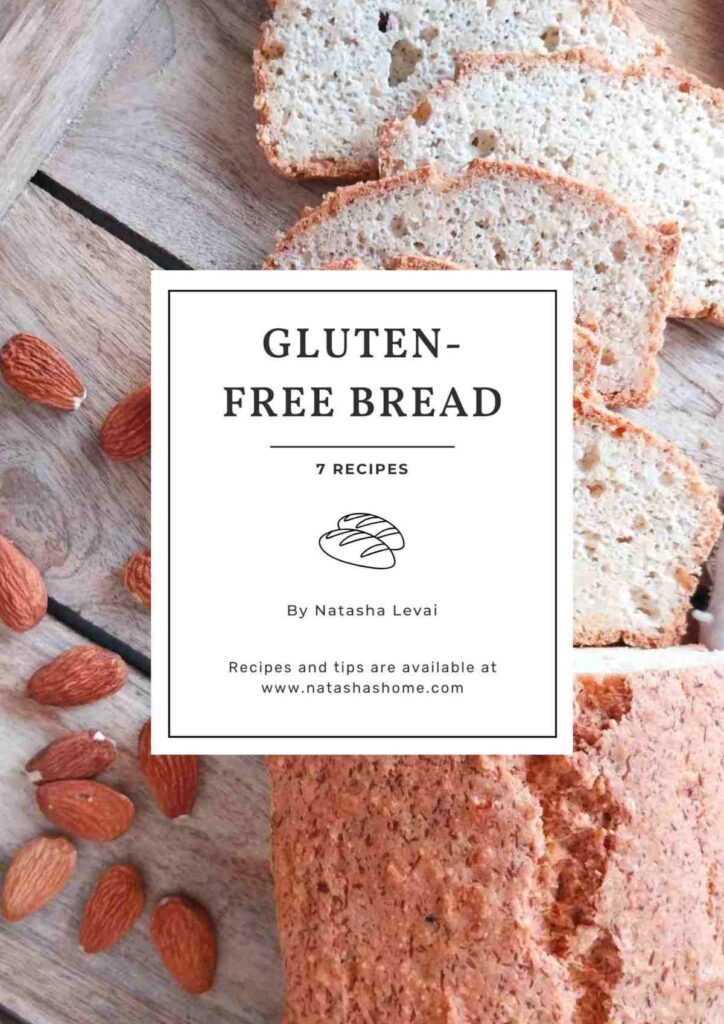
Get my new
Gluten-Free Bread Recipes eBook
The top 7 recipes of 2024!
📖 Recipe
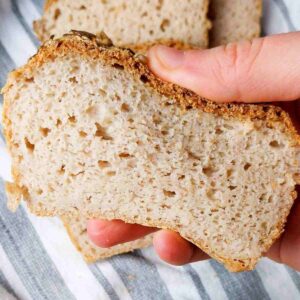
Easy 100% Sorghum Bread (Gluten-Free)
Ingredients
For the dough
- 22 grams (3 tbsp) whole psyllium husk, not powder
- 450 grams (1½+⅓ cups) water, warm or room temperature, not hot
- 15 grams (1tbsp + 1tsp) sugar, honey or maple syrup can be used instead
- 12 grams (1 tbsp) apple cider vinegar, any other edible vinegar can be used
- 7 grams (1 packet) instant yeast OR 10g active dry yeast OR 20g fresh yeast
- 300 grams (2¼ cups) sorghum flour
- 10-12 grams (2 tsp) salt
For topping
- seeds of choice (sesame seeds, linseeds, sunflower seeds, etc.)
Instructions
- First, we will need to make psyllium gel. Add the water, psyllium husk, sugar, and apple cider vinegar in a medium-sized bowl and stir to incorporate. Set aside for a few minutes.If you are using active dry yeast, you will need to save some of the water called for in the recipe to activate the yeast. To activate active dry yeast: take 150g of the water called for in the recipe and warm it up in the microwave until just warm to the touch, not hot. Add the active dry yeast and sugar (optional) and let the mixture sit for 10 minutes until it starts looking frothy and bubbly.Then, proceed with the recipe!
- Combine the flour, salt, and yeast (if using instant or fresh yeast) in a large mixing bowl and whisk to combine.
- Add the wet and dry ingredients together and mix the dough. I prefer using an electric mixer with dough hooks for this recipe to create an extra smooth dough.You can, however, use your hands or a wooden spoon to knead the dough. Mix until all ingredients are evenly incorporated. The dough will be sticky and wet, avoid the temptation to add extra flour!
- Prepare the baking tin by greasing it and/or lining it with parchment paper. Greasing the pan first makes the paper cling to it better. I recommend making a few cuts in the baking paper as you see in the picture to make the lining process easier!
- I like to use a 9x5 inch (22.5x12.5 cm) Pullman loaf pan for this bread.Line it with parchment paper and fix it in place with clothespins until you place the dough in the loaf.
- Transfer the dough to a prepared metal loaf pan and smooth the top out with a silicone spatula. Add the seeds of choice to the top of the loaf. I used sunflower seeds and linseeds, sesame seeds are also a great option. Cover the dough with a kitchen towel. Place the loaf into a warm and draft-free spot for proofing. I like to let my bread rise in the oven with the light on.Let the dough rise until it is right under the top rims of the loaf pan, don't let it rise too much or the bread might deflate during baking. For me, it normally takes 40-50 minutes.When the loaf is ready, I simply turn the oven to 350F/175C, place a dish with water in the bottom of the oven, and keep the bread inside during the preheating time. This method of letting the bread warm up with the oven is called "a cold start." Alternatively, you can preheat the oven to 350F/175C beforehand and place the bread in a preheated oven. Don't forget to add a dish with water to the bottom of the oven for extra steam!Bake for 30 minutes, then take the dish with water out and keep baking for another 45 minutes. The bread will not get too dark on the top. Take the sorghum loaf out of the oven and let it cool in the bread pan for 10 minutes. Then, take the bread out, remove the paper, and place it on a cooling wire rack. Make sure the bread is cooled completely before cutting into it! Use a serrated bread knife for slicing. Enjoy!
Notes
- Don't add extra flour to the dough even if it seems wet.
- Don't open the oven when the bread is in the oven until the first 30 min of baking are up.
- Avoid slicing the bread before it cools completely to avoid extra gumminess.
- Never bake bread in a glass dish as glass doesn't transfer heat that well.
- Don't use the convection setting on your oven.
- Use a digital kitchen scale to measure the ingredients by weight because measuring by volume using cups might not always give you the same results.

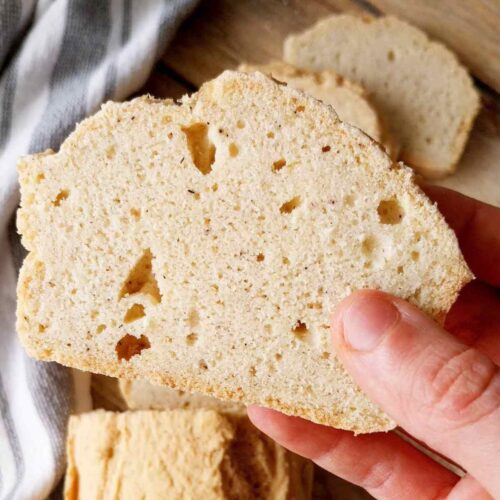
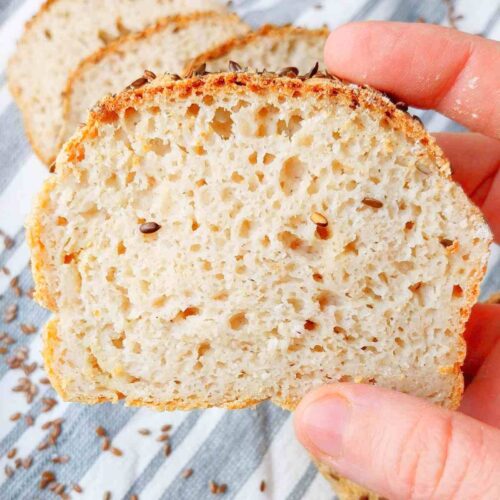
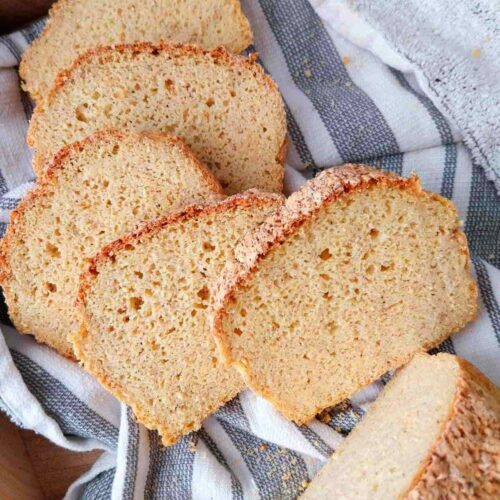
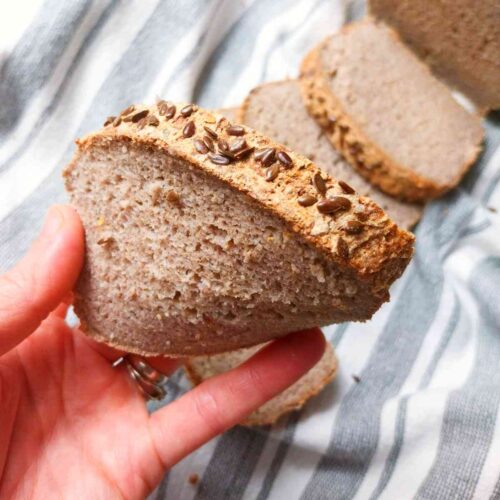
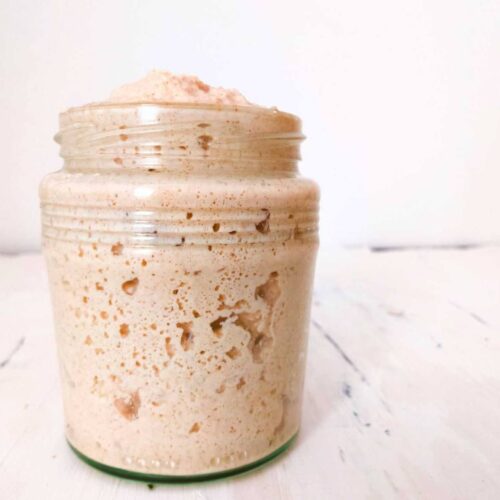
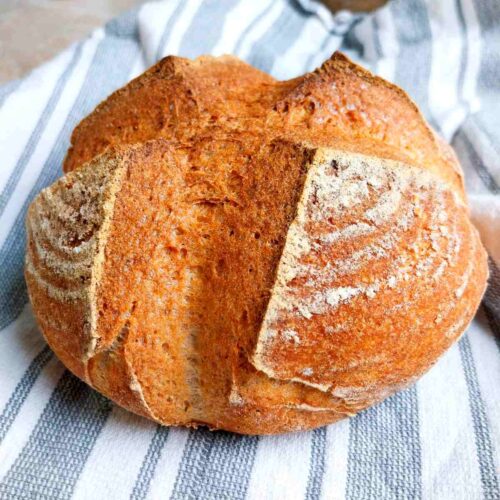
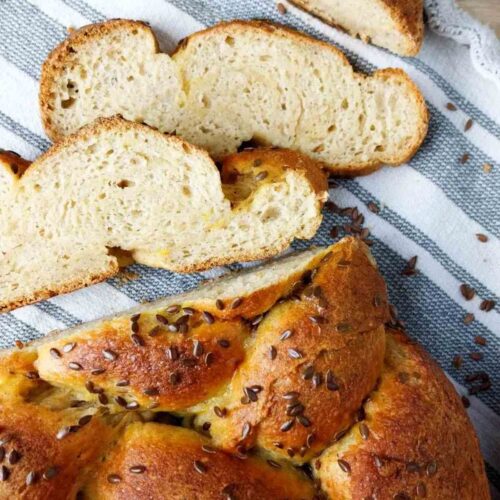
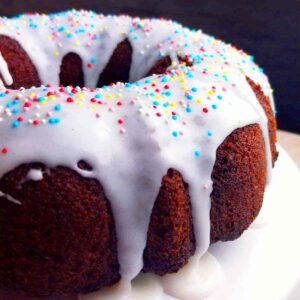

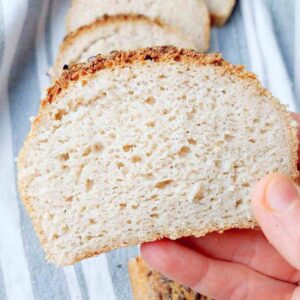
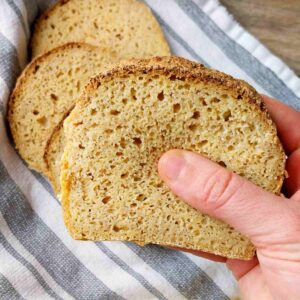
Ella
Delicious. I use psyllium husk powder so I reduce the amount to 18 g. This came out so delicious. Thank you for sharing.
Angela
Hi!
I accidentally mixed my psyllium husk into my flour before creating a gel can I still proceed?
Thank you!
Natasha Levai
Yes, it might just take a bit longer for the psyllium to absorb the liquids